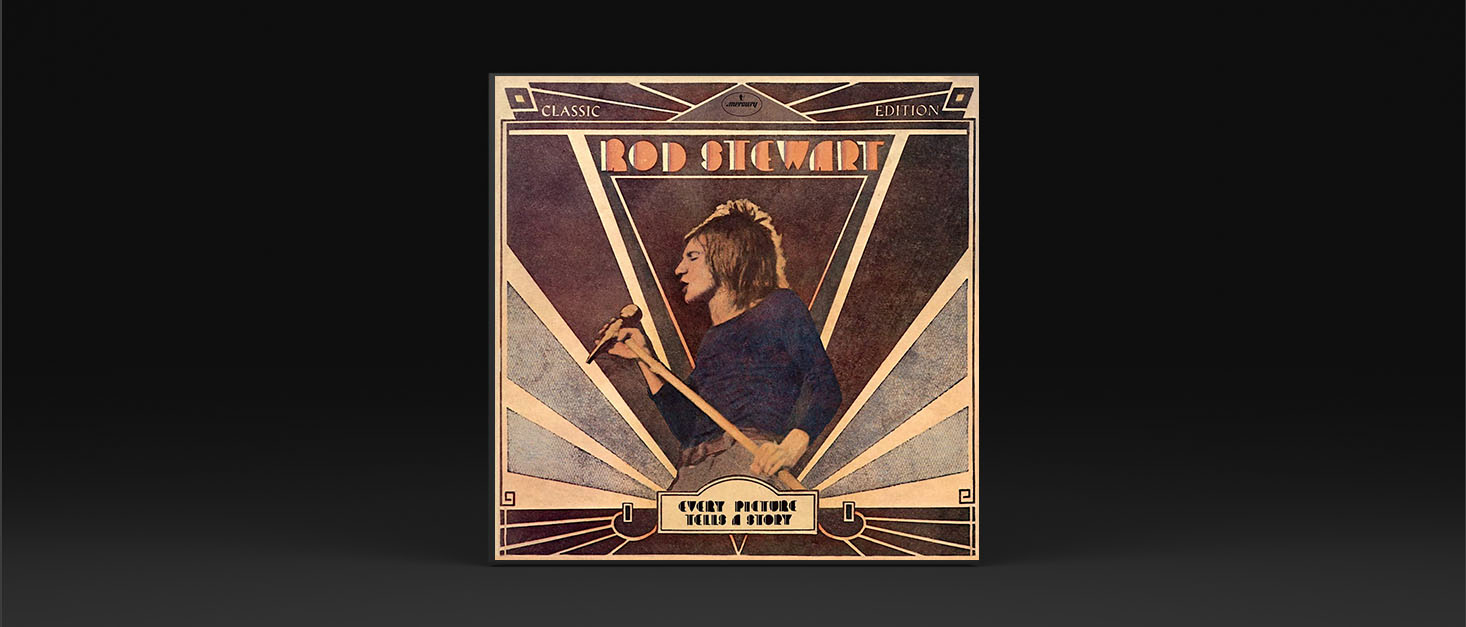Roderick David Stewart released Every Picture Tells a Story on May 1, 1971. The album followed an eventful decade in Stewart’s life: he’d played harmonica and performed vocal duties in a number of bands, had various personal relationships and networked his way to the heart of the London music scene before joining The Faces in 1969, where he finally found himself working with musical collaborators he called friends.
By the time he recorded his third solo long player, all this frenetic activity had already shaped him into something close to the finished article. Indeed, when you add his three subsequent albums – Never a Dull Moment, Smiler and Atlantic Crossing – you have arguably covered Stewart’s golden years. His first two solo albums, An Old Raincoat Won’t Ever Let You Down and Gasoline Alley, are quality items, but in hindsight seem like the entrée for what was soon to come. They honed the template for his distinctive vocal style, which was a mixture of folk, rock and blues, with flashes of London art school cool and American country.
Listened to now, Every Picture Tells a Story sounds dated, yet it’s from a period in music where simple arrangements and studio techniques let the quality of the songs and musicianship shine through. This album oozes class, with a warm, intimate and personal sound courtesy of a stellar cast of musicians and a surprisingly deft production by Rod Stewart himself.
Alongside Stewart’s vocal and acoustic guitar work, there are excellent performances from Ronnie Wood (guitar, pedal steel guitar, bass guitar), Sam Mitchell (slide guitar), Martin Quittenton (acoustic guitar), Pete Sears (piano, celeste), Micky Waller (drums), Andy Pyle (bass guitar) and Dick Powell (violin). The likes of Lindisfarne’s Ray Jackson (mandolin), Long John Baldry (vocals) and Ronnie Lane (bass guitar and backing vocals) also guest to great effect.
The result is an atmospheric and moody sounding album that’s peppered with great songs, many of them original compositions by Stewart. Reason to Believe, Maggie May, Every Picture Tells a Story, Mandolin Wind and the epic I Know I’m Losing You are arguably the highlights, but it’s very much an album you can play from start to finish. Many record buyers at the time thought so, because it reached the number one in the UK, US, Canada and Australia in September 1971, and later ranked 172 in Rolling Stone magazine’s ‘500 Greatest Albums of all Time’ list.
Recorded at Morgan Studios in London, Every Picture Tells a Story has never been hailed as an audiophile masterpiece – yet given a good system, it sounds spacious and enveloping, with plenty of punch and a pleasingly sweet tonal patina. Better still, the recording improves dramatically when played on high quality systems, especially with a top-notch source. Physical media collectors should seek out the Japanese SACD [Mercury, UIGY-9535], while streaming fans can find it on Qobuz, in full 24-bit, 192kHz quality.
